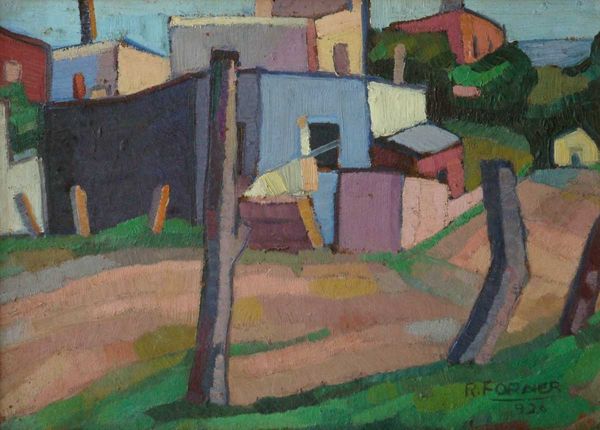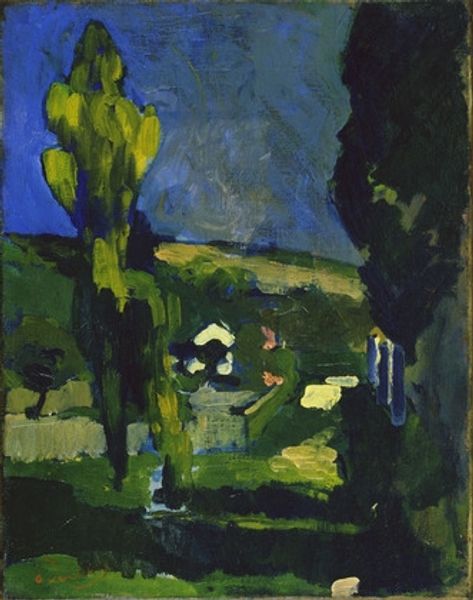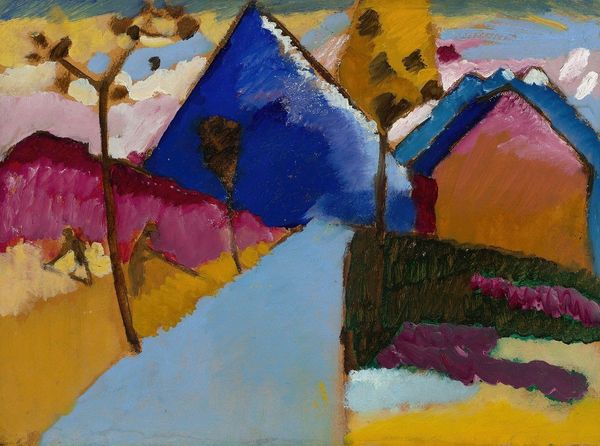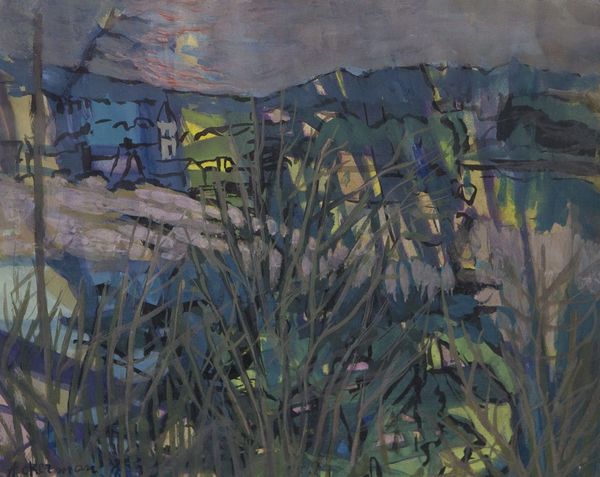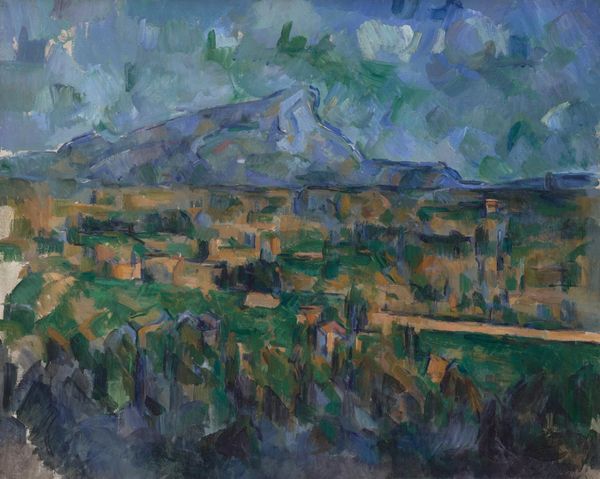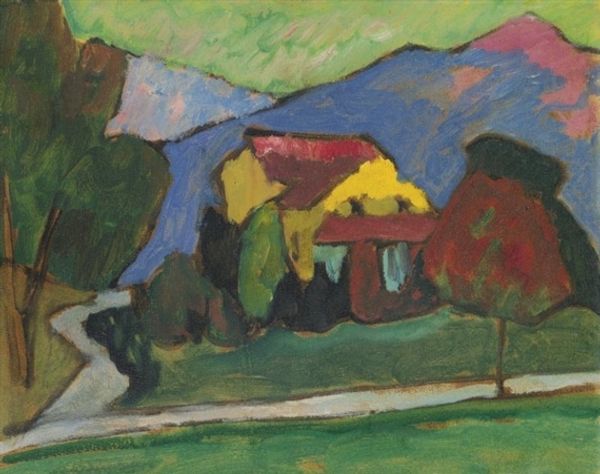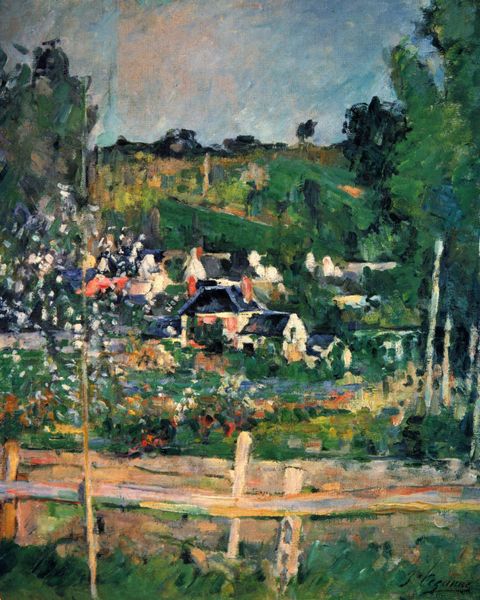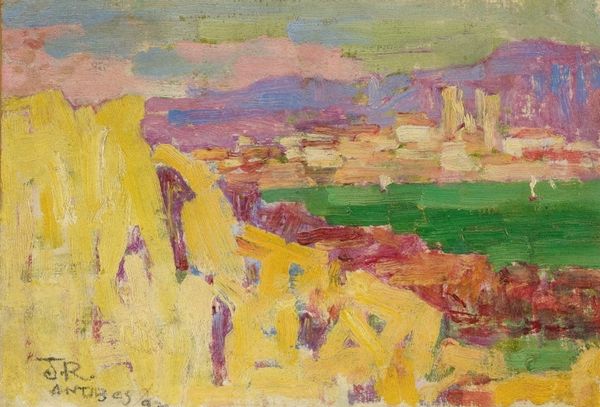
painting, acrylic-paint
#
abstract painting
#
fauvism
#
painting
#
impressionism
#
impressionist painting style
#
landscape
#
impressionist landscape
#
acrylic-paint
#
acrylic on canvas
#
post-impressionism
Copyright: Kmetty János,Fair Use
Curator: Looking at this vibrant scene, one immediately notes the thickness of the application. Editor: Indeed. This is “Houses on the Riverside of Danube in Szentendre" by Kmetty János. Though the artwork doesn't have a confirmed date, it reflects a post-impressionistic style and I’d place it in the early to mid-20th century. It makes me think of fauvism too with the bold, unblended use of acrylic paint. It’s quite expressive. Curator: For me it immediately evokes the artist's handling of materiality— the visible brushstrokes show his active labor and deliberate approach. The social aspect would be in considering the relative availability and cost of acrylic paint in Hungary during that period. Editor: Interesting, you go directly to production costs. To me it shows the continued appeal of landscape painting within the Hungarian art scene, reflecting broader European artistic trends while simultaneously documenting regional architectural styles. There’s a connection to place here that feels deliberate. Curator: Place certainly interacts with consumption here too. The vibrant colour choices draw the eye, inviting the viewer into this fabricated depiction of homes in a semi-urban riverside. But there is very little blending. It presents an unusual view of housing when acrylic paint’s consistency has been purposefully thickened. Editor: Absolutely. The choice of perspective too – elevated and slightly flattened. Kmetty János places us in the position of an outside observer, framing Szentendre within a particular visual narrative that suggests stability while employing an almost expressionistic aesthetic. Curator: Stability perhaps, yet he's using that perspective, employing this material to highlight specific parts of a material setting to make it seem vibrant— it speaks to a consumer appetite for seeing beauty and charm in everyday subjects, wouldn’t you say? Editor: That's insightful. Seeing this artwork offers an interesting portal into understanding Hungarian art in the early to mid-20th century. Curator: A material consideration certainly frames that appreciation, doesn’t it.
Comments
No comments
Be the first to comment and join the conversation on the ultimate creative platform.



